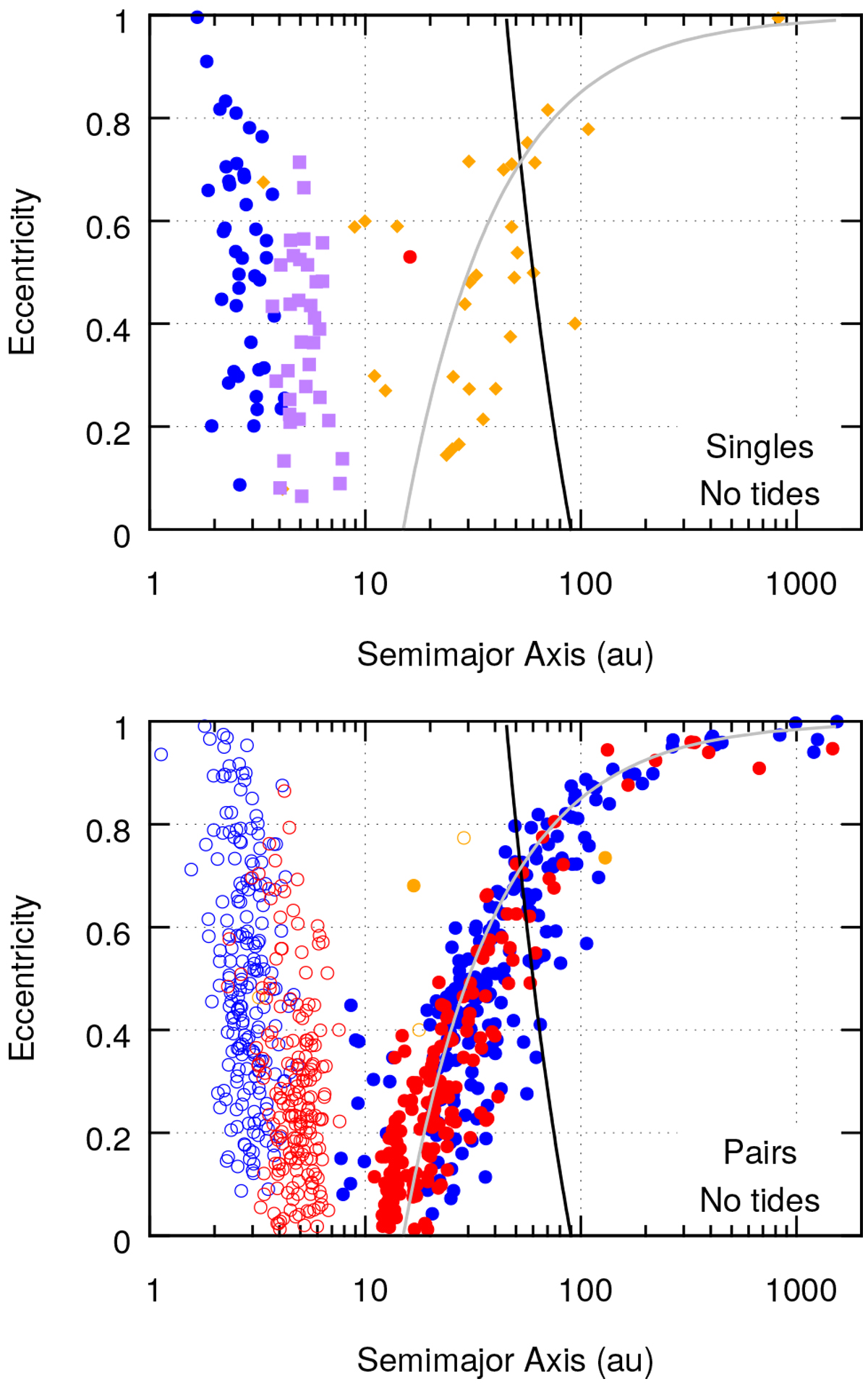Fig. 9

Outcome of the scattering of three giant planets initially on circular orbits with semi-major axes near10 au in the conservative (tide-free) case. Only the systems that lost at least one planet (≈ 46% of the initial 1000) are represented. The black and grey lines are as in Figs. 7 and 8. Top panel: systems that ended up with a single planet at the end of the run (≈ 23% of the systems that underwent a strong instability). Blue dots represent planets whose two companions were ejected, purple for the systems that underwent both planet–planet collision and ejection, orange for those that underwent both ejection and collision with the star, and red when two planet–planet collisions occurred. Bottom panel: systems that ended up with two planets at the end of the run (≈ 77% of the systems that underwent a strong instability). The colour-coding is the same as in Figs. 7 and 8, with open circles for the inner planet and filled circles for the outer one.
Current usage metrics show cumulative count of Article Views (full-text article views including HTML views, PDF and ePub downloads, according to the available data) and Abstracts Views on Vision4Press platform.
Data correspond to usage on the plateform after 2015. The current usage metrics is available 48-96 hours after online publication and is updated daily on week days.
Initial download of the metrics may take a while.


